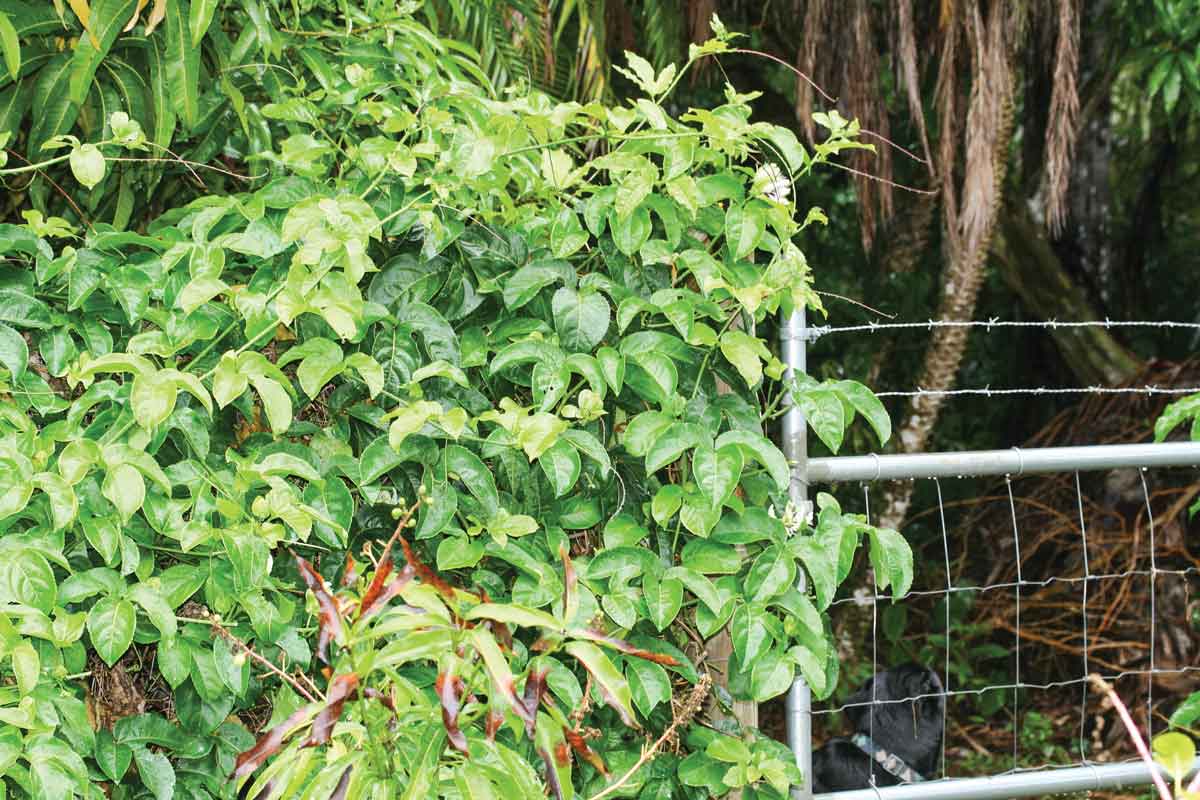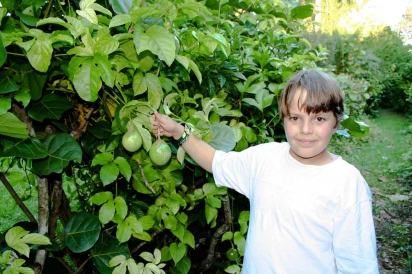Build the Wall – or Fence: The Story of the Passionfruit
In today’s political climate, there may be nothing more polarizing than fences, often called walls if they run along our southern border with Mexico.
In agriculture, however, we look at fences a bit differently. They serve as barriers to keep out unwanted vehicles, animals and people, but they also serve to keep in chickens and cows. In the edible garden, the fence can achieve even more, serving as a planting opportunity for structurally challenged crops – vines. Fences are expensive, so let’s use this invaluable multi-tasking asset to provide many edible additions to our table.
In my home garden and orchard, certain crops are obligatory based upon my choice in marriage and how tranquil I want to live my life. One of these is the passionfruit. For Brazilians, like my wife, the passionfruit is an iconic flavor, used for juices, sweets and desserts, that can evoke obsessive behaviors and explosive responses. If one were to ignore its importance, it could challenge the financial stability of the household. Passionfruit are an expensive item in grocery stores here if you can even find them. Commercially available frozen passionfruit pulp is not an adequate substitute. Without a fence, passionfruit culture can be a tricky proposition. In our edible garden, the fences are key components and the passionfruit is not disputed.
Growing Passionfruit
We buy passionfruit seed in Brazil and throughout South America. We also save our seed for replanting and gifting to others, for I have not happened upon seed here in the United States for several years. The seed are easy to sprout and quick to develop. Here’s where the fence comes in. After producing a few leaves, the passionfruit develops the need for something to sprawl over, or it will cease to grow, quickly languishing with outstretched tendrils in search of a helping hand. Given a fence to provide support, the vine will develop quickly and cover a vertical plane 50 feet or more in either direction of the plant. Some species of passionfruit are quite vigorous. Without management the vine can quickly get out of hand, but for me, losing is not an option, so I prune.
You can grow several species of passionfruit. Here in South Florida, the best-adapted edible species are Passiflora edulis types. Sweet cultivars eaten out of hand come in reds and yellows, and there are strains or subspecies, typically yellow skinned, selected for juices and flavoring. Most passionfruit benefit from hand pollination. Here, many are obligate hand-pollinating crops because we lack large carpenter bees that pollinate passionfruit in other locations. Use a paint brush or finger to transfer the pollen from the anthers to the pistil of each flower. You can easily achieve a bountiful harvest of passionfruit and convert the wasted fence space into productive vertical farming.
Try Dragon Fruit, Grapes
The fence does not only support passionfruit, of course. Use your fence to grow flowering vines, other fruit and vegetables. Over the years, we have grown English peas, wing beans, flowering vines, dragon fruit and grapes. Take care to not grow vines that are too heavy. On typical fences, dragon fruit, a cactus, is simply too heavy, quickly damaging the fence. Strong sustained winds from hurricanes and storms can also damage fences or dislodge the posts. When a hurricane approaches, be ready to cut the vines off the fence or at the very least lighten the load to allow for less wind resistance.
On principal, I do not like fences. Exclusion is not a big thing in my life. I do not like walking around, climbing over, ducking under or opening gates in fences and, like so many edible gardeners, I am forever overplanting my personal spaces. Over the years, I have struck a compromise with my fences. The ample sunlight that falls upon them is not squandered. By growing my passionfruit on the fences, I not only convert a vexing structure to a useful space, I produce a delicious and healthy crop within my edible garden and gain domestic credit that can be cashed in along the winding road of marriage. Fences can be divisive and harsh, but they also bring people together.






